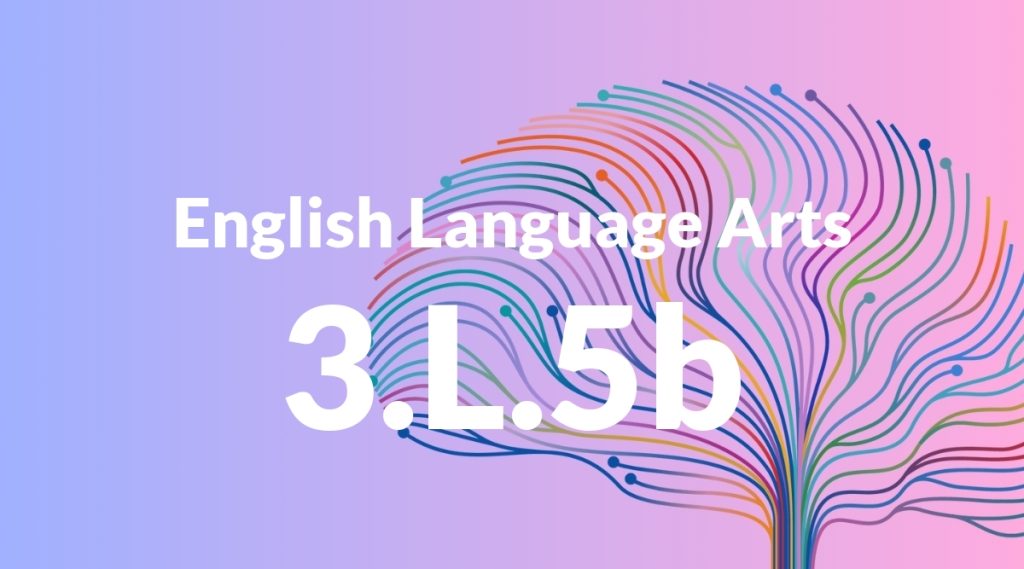Standard: 3.L.5b – Identify real-life connections between words and their use (e.g., describe people who are friendly or helpful).
Grade level: Grade 3
Subject: English Language Arts
Domain: Language
Teacher Overview
This standard focuses on helping students identify and understand the connections between words and their real-life applications. It is crucial for developing descriptive language skills and enhancing overall communication abilities. Students should know basic vocabulary, understand adjectives, and be able to construct simple sentences.
Students will advance to making more complex word connections, improving their descriptive writing and reading comprehension.
Common Misconception 1
Some students might think that words have a single, fixed meaning. This is incorrect because many words have multiple meanings and can be used in various contexts.
Intervention 1
Use diverse examples and contexts to show how words can have different meanings. Encourage students to create sentences using the same word in different ways.
Common Misconception 2
Students may not realize the importance of descriptive words in daily life. This misconception can hinder their ability to communicate effectively.
Intervention 2
Highlight the role of descriptive words in making conversations and writing more vivid and precise. Provide practice opportunities where students describe familiar objects or people.
Prerequisite Knowledge
Students should understand basic vocabulary and be able to use descriptive words in sentences. They should also be familiar with the concept of adjectives and simple sentence structures.
Subsequent Knowledge
After mastering this standard, students will be able to make more complex connections between words and their meanings, enhancing their descriptive writing and reading comprehension skills.
Instructional Activities
- Role-playing scenarios where students describe characters using specific adjectives.
- Creating word maps that show different uses of a word.
- Writing short stories that require the use of descriptive words.
- Group discussions about the characteristics of people in their lives.
- Drawing and labeling pictures with descriptive words.




